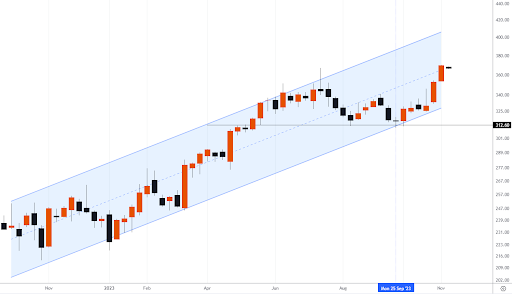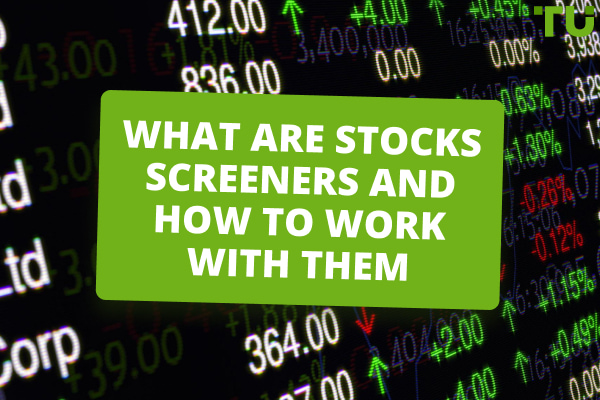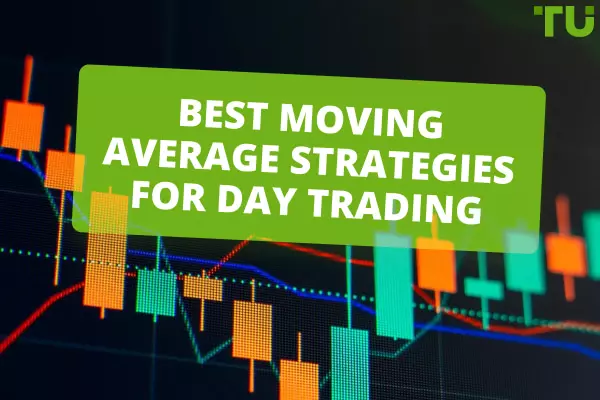Do Professional Traders Use Stop Losses?
Professional traders usually use stop-loss orders to manage their risk effectively. They may set stop-loss levels based on a percentage of the position, or based on key support levels or various indicators. When using stop-losses, traders should consider their risk tolerance, comfort level, and technical analysis.
Using stop-losses is a key tool for controlling financial losses that traders use as part of a wider risk management strategy. They are essential for preserving capital, controlling emotional trading, and adapting to volatility Stop-loss orders should be used as part of a wider disciplined approach to trading. The necessity of stop-losses as part of a trading strategy means that most professional traders use them. In this article, Traders Union will be looking at if successful traders use stop losses, the different types of stop losses, and why stop losses are important for successful trading.
-
Should I use stop-loss in trading?
Yes. As a trader, you should aways implement the best risk management tools, including stop-loss orders, to preserve capital, control emotional trading and adapt to market conditions.
How successful traders use stop losses?
There is no guaranteed method for being a successful trader, though there are many steps traders can take to maximize their chances of succeeding. Aside from laying out a well-defined trading strategy and using various types of analysis, traders should implement careful risk management strategies. One way they can do this is by using stop losses.
Stop loss orders are orders that traders set to automatically trigger the sale of a position if its value drops below a certain level. Here’s how and why professional traders use stop-losses:
-
Risk Management: Successful traders use stop losses to protect their profits and limit their losses. When managing a large portfolio of financial assets, it’s helpful to close a position when it decreases by a certain number, to prevent even further loss, or to lock in profits when the value has increased beyond a sufficient level.
-
Mental Stop Losses: A mental stop-loss is a decision made by a trader to sell a position at a predetermined price level, and is sometimes used by professional traders. Rather than setting a physical stop-loss order, they plan in advance to sell if an asset’s value drops to, or below, a certain price. This can be much more risky than manual stop-orders though, as prices could fluctuate faster than the trader can react, or emotional trading may prevent them from executing the sale.
-
Non-Use Cases: Some professional traders may not use stop losses when trading without leverage, as the risk of significant losses due to volatility is much lower. They may also not use stop-losses when using options to hedge positions, as the options already act as a form of insurance on losses, and remove some of the need for traditional stop-loss orders.
-
Prop Traders: Prop traders, who are professional traders trading using a firm’s capital for direct profit, are obliged to use stop-loss orders by their firms. Prop trading firms often enforce strict risk management, and stop-loss orders are an effective way to prevent prop traders from incurring unnecessary risk.
Different Types of Stop Losses
Though all stop-loss orders are designed to prevent a position from taking on further losses in value, there are different approaches you can use when setting stop-loss orders depending on your own trading strategy and risk tolerance.

Setting stop-loss at key support level on MSFT stock
Let’s imagine a trader decides to invest in Microsoft after noticing that MSFT stock is in an uptrend. They decide to buy MSFT stock priced at $315. To protect themselves from an unforeseen trend reversal, they can set a stop-loss order. The level that they set their stop-loss at could be determined by a few deciding factors.
-
Stop-Loss at Entry Price: Setting a stop loss based on the entry price of $315, such as $310, provides a fixed dollar amount at which the trade automatically closes. This limits potential losses and ensures a predefined exit point.
-
Percentage Stop-Loss: A percentage-based stop loss, such as 5% less than the entry price, adjusts to market volatility. If the stock drops by 5%, the trade is automatically closed, adapting to the stock's price movements. This can be achieved with a trailing stop-loss.
-
Stop Loss by Support or Resistance Level: Identifying key support or resistance levels on the price chart helps determine strategic stop-loss points. If the stock breaks below a key support level, the stop loss is triggered. For example, in the chart above, the support level can be found at $312.60, so a trader might set a stop-loss to trigger at 312.60 or below.
-
Stop Loss by Indicator: Utilizing technical indicators like moving averages, Bollinger Bands (BB), or Parabolic SAR can guide stop-loss placement. For example, setting the stop-loss just below a moving average may act as a safety net against unfavorable price movements.
The importance of using stop losses in different trading strategies
Stop losses are important in all trading strategies, for all types of traders. Stop losses are crucial in implementing risk management and controlling the amount of capital at risk in a trade. By defining the maximum acceptable loss upfront, traders safeguard their investment portfolios from significant downturns. Stop losses act as a safety net, preventing substantial losses and preserving capital for future opportunities, which is fundamental in trading.
Stop losses also help traders in protecting themselves from engaging in emotional trading. Emotions like fear or greed can arise during market fluctuations. Having predefined exit points using stop-loss orders promotes disciplined trading so traders don’t end up ‘FOMO trading’ or chasing losses. They also can help to alleviate stress as traders know the maximum potential loss when opening a position, leaving them to focus on their overall trading strategy without constant worry about catastrophic losses.
Best Forex brokers


Tips for setting effective stop losses:
It’s important to set stop-loss orders that are effective and well thought out. Here are some tips for setting effective stop losses:
-
Comfort Level: Set your stop losses at a level that you are comfortable with. Determine the maximum amount or percentage of your trading capital you're willing to risk on a single trade. This sets the foundation for calculating the appropriate stop loss level.
-
Assess Best Stop-Loss: Do not set your stop losses too tight, as this could lead to them being triggered too early. Likewise, do not set your stop losses too wide, as this could lead to you losing more money than you are comfortable with.
-
Regularly Review: Regularly review your trading strategy and adjust stop loss levels based on performance, changes in market conditions, or changes in your own risk tolerance.
-
Technical Analysis: Use technical indicators, support/resistance levels, or chart patterns to identify strategic points for placing stop losses. Aligning stop orders with these elements can improve the probability of withstanding normal market fluctuations.
-
Consider Volatility: Adjust your stop losses based on market volatility. In highly volatile conditions, wider stops may be needed to account for large price fluctuations, while tighter stops may be suitable in calmer markets.
There is heavy debate on whether brokers intentionally seek out stop loss orders and trigger them for personal gain. Read our article about the subject: Do Brokers Really Hunt Down Client Stop Loss Orders?
Conclusion
In conclusion, the evidence suggests that successful traders use stop losses. Stop losses are an essential risk management tool that can help traders limit their losses and protect their capital. By using stop losses, traders can reduce their risk of losing money on losing trades and increase their chances of success.
Of course, there are some traders who do not use stop losses. These traders may believe that they can accurately predict market movements and avoid losing money. However, even the most experienced traders make mistakes, and stop losses can help to protect traders from these mistakes.
If you are a trader, it is important to consider using stop losses. Stop losses can help you to improve your trading results and reduce your risk of losing money.
Glossary for novice traders
-
1
Broker
A broker is a legal entity or individual that performs as an intermediary when making trades in the financial markets. Private investors cannot trade without a broker, since only brokers can execute trades on the exchanges.
-
2
Trading
Trading involves the act of buying and selling financial assets like stocks, currencies, or commodities with the intention of profiting from market price fluctuations. Traders employ various strategies, analysis techniques, and risk management practices to make informed decisions and optimize their chances of success in the financial markets.
-
3
Risk Management
Risk management is a risk management model that involves controlling potential losses while maximizing profits. The main risk management tools are stop loss, take profit, calculation of position volume taking into account leverage and pip value.
-
4
Volatility
Volatility refers to the degree of variation or fluctuation in the price or value of a financial asset, such as stocks, bonds, or cryptocurrencies, over a period of time. Higher volatility indicates that an asset's price is experiencing more significant and rapid price swings, while lower volatility suggests relatively stable and gradual price movements.
-
5
Forex Trading
Forex trading, short for foreign exchange trading, is the practice of buying and selling currencies in the global foreign exchange market with the aim of profiting from fluctuations in exchange rates. Traders speculate on whether one currency will rise or fall in value relative to another currency and make trading decisions accordingly.
Team that worked on the article
Jason Law is a freelance writer and journalist and a Traders Union website contributor. While his main areas of expertise are currently finance and investing, he’s also a generalist writer covering news, current events, and travel.
Jason’s experience includes being an editor for South24 News and writing for the Vietnam Times newspaper. He is also an avid investor and an active stock and cryptocurrency trader with several years of experience.
Dr. BJ Johnson is a PhD in English Language and an editor with over 15 years of experience. He earned his degree in English Language in the U.S and the UK. In 2020, Dr. Johnson joined the Traders Union team. Since then, he has created over 100 exclusive articles and edited over 300 articles of other authors.
Mirjan Hipolito is a journalist and news editor at Traders Union. She is an expert crypto writer with five years of experience in the financial markets. Her specialties are daily market news, price predictions, and Initial Coin Offerings (ICO).









